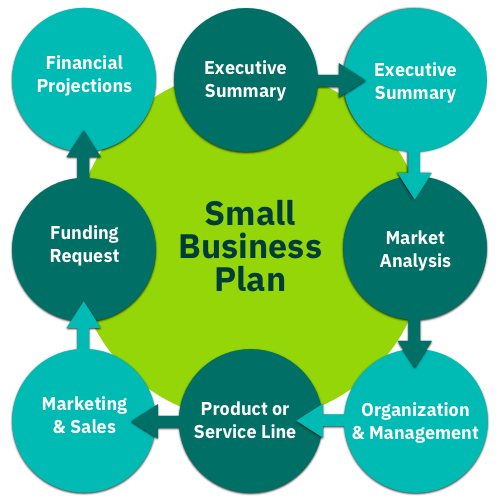Financial projections are essential tools for any business, whether you’re a start-up or an established company. They offer a roadmap for future financial performance, helping you make informed decisions, secure investors, and guide strategic planning. This article will provide a comprehensive overview of economic projections, covering their importance, structure, and critical components, and offer guidance on developing accurate forecasts that can elevate your business planning and growth potential.
Why Financial Projections Matter

Creating financial projections is a proactive way to understand your business’s direction. Projections provide critical insights into anticipated revenue, expenses, and profit margins. They serve as an internal guide and as essential documents for external stakeholders, such as investors and financial institutions. With strong projections, you demonstrate financial literacy, strategic planning, and preparedness for various scenarios. Here’s why they are so valuable:
- Forecast Cash Flow: Accurate cash flow projections help businesses plan for slow seasons and avoid cash shortages.
- Attract Investors: Investors rely on financial projections to gauge a business’s profitability and stability, making projections vital for raising capital.
- Set Benchmarks: Financial projections help establish benchmarks for monitoring progress and adjusting strategies over time.
Types of Financial Projections

Financial projections can take various forms, depending on the needs of the business. Here, we break down the primary types:
1. Income Statement Projections
The income statement, or profit and loss (P&L) projection, offers insights into revenue, costs, and profits over a specific period. This type of projection typically includes:
- Revenue Forecast: Estimations of how much income your business will generate.
- Cost of Goods Sold (COGS): Projected expenses directly tied to production.
- Gross Profit: Revenue minus COGS.
- Operating Expenses: Forecasted costs like rent, salaries, and marketing.
- Net Income: Final profit after deducting all expenses from revenue.
An income statement projection is the foundation for understanding profitability and is critical when presenting financial health to investors.
2. Cash Flow Projections
Cash flow projections track the inflow and outflow of money, highlighting liquidity. Cash flow statements consist of three main areas:
- Operating Activities: Cash generated or spent from core business operations.
- Investing Activities: Cash is used to buy assets or other investments.
- Financing Activities: Cash received from or used to pay debts, loans, and equity.
Understanding cash flow helps businesses ensure they have enough cash to cover day-to-day expenses and prepare for future growth. A well-prepared cash flow projection mini minimises the risk of liquidity issues that could harm the business.
3. Balance Sheet Projections

A balance sheet projection outlines the expected financial position of the business at a future date, showing assets, liabilities, and equity. Key elements include:
- Assets: Items of value owned by the business (e.g., cash, inventory, property).
- Liabilities: Financial obligations like loans, accounts payable, and taxes.
- Equity: The owner’s interest in the company.
Balance sheet projections provide a snapshot of financial stability, illustrating whether a company has the resources to meet its obligations and invest in growth.
4. Break-Even Analysis
Break-even analysis is a projection tool determining the point at which revenue equals expenses. Knowing your break-even point helps in pricing products, setting sales goals, and preparing for potential downturns.
Steps to Create Effective Financial Projections
Developing financial projections requires a thorough approach, often integrating historical data, market research, and realistic assumptions. Here’s how to get started:
Step 1: Gather Historical Financial Data

Reviewing past financial data (income statements, balance sheets, and cash flow statements) is the first step for existing businesses. Historical trends provide a solid foundation for forecasting future growth and pinpointing seasonal fluctuations.
Step 2: Conduct Market Research
Market research helps align your projections with industry standards. Investigate trends, customer behaviour, and competitor performance. For instance, understanding your industry’s average profit margins can help validate your revenue forecasts.
Step 3: Set Assumptions and Variables
Establish realistic assumptions based on your business model, growth plans, and industry trends. Typical assumptions include:
- Growth Rate: An estimate of how quickly your business revenue will grow.
- Cost Inflation: Expected increases in expenses like wages, rent, and supplies.
- Customer Retention and Acquisition: Projected rates for gaining and retaining customers.
Step 4: Create Detailed Revenue Projections

Break down revenue projections by product lines, geographic regions, or customer segments. Include sales volume, average price, and seasonal patterns to ensure accuracy.
Step 5: Forecast Expenses
Projected expenses should cover fixed (rent, salaries) and variable costs (materials, commission). A detailed expense breakdown helps with cost control and provides insights into potential profit margins.
Step 6: Build a Cash Flow Forecast
Cash flow projections require you to estimate incoming and outgoing cash monthly. To avoid financial strain, plan for delayed payments, recurring expenses, and seasonal cash variations.
Step 7: Compile a Projected Income Statement and Balance Sheet

Once you’ve built revenue, expense, and cash flow forecasts, compile them into an income statement and balance sheet. This final step offers a holistic view of anticipated profitability and financial stability.
Best Practices for Financial Projections
Accurate financial projections require a mix of careful planning and strategic foresight. Here are some best practices to help you create reliable and realistic forecasts:
- Use Conservative Estimates: Be realistic about revenue growth and costs. Investors value conservative projections over overly optimistic ones.
- Regularly Update Projections: Revisit projections quarterly or semi-annually to adjust for changing circumstances.
- Test Different Scenarios: Model various “what-if” scenarios to see how changes in sales, costs, or economic conditions could impact financial outcomes.
Common Pitfalls in Financial Projections

Creating projections is challenging, and common mistakes can reduce their accuracy. Be mindful of these pitfalls:
- Overestimating Revenue: Only assuming rapid growth with substantial evidence.
- Ignoring Market Trends: Keep projections relevant by factoring in recent industry and market trends.
- Underestimating Expenses: Overlooked or underestimated costs can lead to cash flow issues.
How Financial Projections Influence Strategic Decisions
Beyond their importance in securing financing, financial projections are central to strategic decision-making. Here’s how they guide crucial business decisions:
- Budgeting and Resource Allocation: Financial projections help determine budget allocations and prioritisation.
- Growth Planning: By forecasting revenue growth, businesses can evaluate when and how to expand operations.
- Risk Management: Scenario planning through projections allows companies to prepare for potential economic downturns or business disruptions.
How Often Should Financial Projections Be Updated?
While many businesses create annual projections, regular updates improve accuracy. Best practices recommend updating projections quarterly, allowing adjustments based on real-time data and market changes. This adaptability enables businesses to stay on track and quickly adjust to new opportunities or risks.
Essential Tools and Software for Financial Projections

Numerous financial projection tools and software can streamline the forecasting process. Here are some top choices:
- Excel/Google Sheets: Highly customisable and commonly used for creating tailored projections.
- QuickBooks: Ideal for small and medium-sized businesses, QuickBooks offers integrated projection tools.
- Financial Forecasting Software: Dedicated software like PlanGuru and Jirav provides comprehensive forecasting capabilities, helping businesses create detailed financial models.
Conclusion
Financial projections are indispensable for any business aiming to grow sustainably and attract investors. Companies can plan for the future more confidently and clearly. Creating structured, realistic projections offers a roadmap that aligns companies with financial goals, resource needs, and market demands. A commitment to regularly updating these projections, adjusting for changes, and adhering to best practices will equip your business with a powerful tool to navigate future challenges and capitalise on opportunities.








